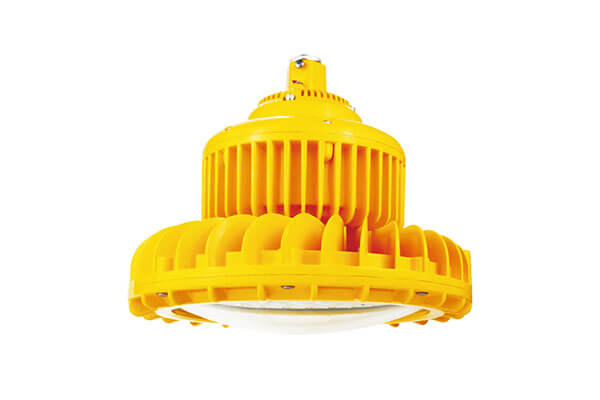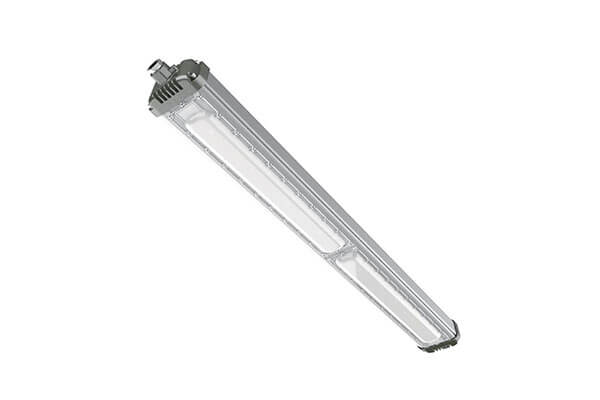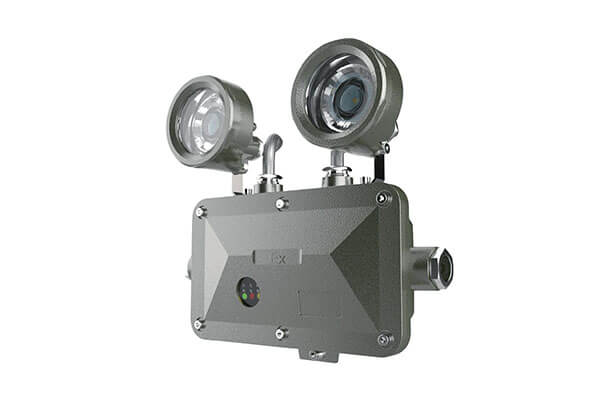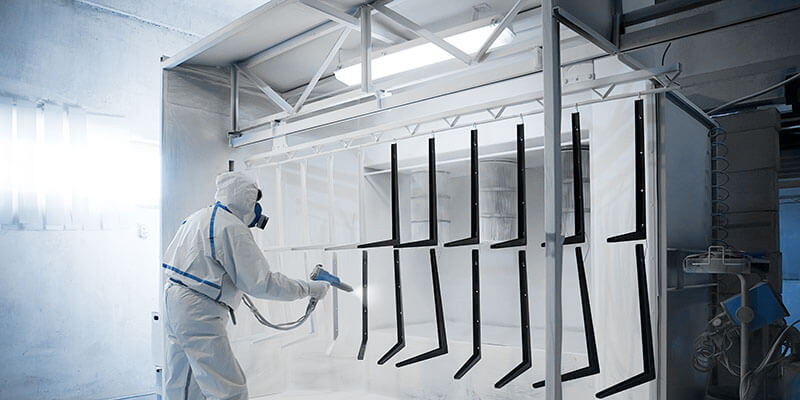Hazardous Location Lighting
Inquiry
More questions about our explosion proof lighting products?
Looking for lighting consultation, designs or quotations for your Ex lighting projects?
Leave your messages here, Let’s talk more.
Share your details below
Lighting plays a critical role in the safety and efficiency of hazardous locations. Whether it’s an industrial plant with potentially explosive materials or an offshore oil rig exposed to harsh saltwater spray, the proper hazard location lighting solution can mean the difference between safe operations and catastrophic incidents. In this article, you’ll learn about the importance of utilizing hazardous location lighting and the factors to consider when selecting the right solution for your specific environment.
As you explore the world of hazardous location lighting, you’ll come to understand the wide variety of fixtures and products available to suit various corrosive, explosive, and otherwise dangerous environments. Understanding the environmental ratings, lighting technologies, and relevant regulations can help you make the best choice for your hazardous location. Being equipped with the latest knowledge on this topic will not only enable you to make informed decisions, but also ensure the utmost safety for you and your colleagues.
In the paragraphs to follow, we will delve into the types of hazardous location lighting, the importance of adhering to industry standards and regulations such as those set by the Occupational Safety and Health Administration (OSHA), and highlighting some widely reputed manufacturers and suppliers to help you find the ideal lighting solution for your specific hazardous environment.
Understanding Hazardous Locations
Hazardous locations are areas where flammable gases, vapors, liquids, or combustible dust are present, increasing the risk of explosions, fires, or accidents. To minimize these risks, hazardous location lighting is designed to be explosion-proof and capable of functioning safely in such areas. This section will delve into the classification system for hazardous locations and the specific requirements for each classification.
Classifications
The classification system for hazardous locations categorizes areas according to the level of danger they pose. These categories are based on the National Electrical Code (NEC) and are commonly referred to as class, division, and groups.
Class 1
Class 1 hazardous locations are areas where flammable gases, vapors, and liquids may be present. These areas typically include refineries, fuel storage facilities, and chemical processing plants. Within Class 1, different divisions specify the likelihood of hazardous materials being present:
- Division 1: In these areas, hazardous materials are likely to be present during normal operating conditions.
- Division 2: Here, hazardous materials are not likely to be present during normal operating conditions, but their presence may occur during accidental events or malfunctioning equipment.
Class 2
Class 2 hazardous locations are areas where combustible dust is present or may be present. These areas often include grain storage facilities, flour mills, and woodworking plants. Similar to Class 1, Class 2 is also divided into two divisions based on the likelihood of combustible dust being present:
- Division 1: In these areas, combustible dust is likely to be present during normal operating conditions.
- Division 2: Here, combustible dust is not likely to be present during normal operating conditions but may be present during accidental events or malfunctioning equipment.
Groups
In addition to class and division, hazardous locations are also categorized into groups based on the type of hazardous material present. These groups are designated by the NEC and are as follows:
- Group A: Acetylene
- Group B: Hydrogen, butadiene, ethylene oxide, or other gases with similar characteristics
- Group C: Ethylene, cyclopropane, or other gases with similar characteristics
- Group D: Propane, gasoline, acetone, or other gases with similar characteristics
- Group E: Metal dust, including aluminum, magnesium, and their commercial alloys
- Group F: Carbonaceous dust, including coal, carbon black, or others
- Group G: Flour, grain, or other combustible dust with similar characteristics
Understanding and adhering to these classifications during the design and installation of hazardous location lighting is crucial for maintaining safety and minimizing the risk of accidents in hazardous areas.
Hazardous Location Lighting Types
Hazardous location lighting is essential for ensuring safety and efficiency in environments where flammable gases, vapors, or combustible dust may be present. In this section, we will discuss the different types of hazardous location lighting, including fluorescent lighting, low bay and high bay lighting, and signal lighting.
Fluorescent Lighting
Fluorescent lighting is a popular choice for hazardous areas due to its energy efficiency and long life span. These lights use less energy than traditional incandescent or high-intensity discharge (HID) lamps, resulting in lower operating costs and reduced environmental impact. Many manufacturers offer explosion-proof lighting fixtures for hazardous locations, which meet the applicable safety requirements of NEC, CEC, IECEx, and ATEX.
Some key features of fluorescent lighting include:
- Energy efficiency: Uses less energy than incandescent or HID lamps.
- Long life span: Can last up to 100,000 hours.
- Explosion-proof options: Meets safety requirements for hazardous locations.
Low Bay and High Bay Lighting
Low bay and high bay lighting refer to the mounting heights of lights in industrial or commercial spaces. Low bay lighting is typically used in areas with ceiling heights of 20 feet or less, while high bay lighting is used in spaces with ceiling heights above 20 feet. LED hazardous location high bay lights, for example, are designed to perform in areas with hazardous materials, offering significant reductions in maintenance and energy costs compared to conventional metal halide systems.
Some benefits of low bay and high bay lighting include:
- Appropriate for various ceiling heights: Low bay for under 20 feet, high bay for above 20 feet.
- Energy and maintenance savings: LED options can offer up to 70% reduction in costs compared to traditional systems.
- Suitable for hazardous locations: Explosion-proof options are available.
Signal Lighting
Signal lighting is a vital component of hazardous location lighting systems, as it ensures the safety of workers and equipment by providing visual notifications of danger, alarms, and other critical information.
Key aspects of signal lighting include:
- Visual notifications: Alerts for danger, alarms, and critical information.
- Energy efficiency: LED solutions use less energy than traditional lighting methods.
- Long life span: LED products can have a life expectancy of up to 100,000 hours.
Safety Considerations
Explosion Risk
In hazardous locations, explosion risks must be carefully addressed to ensure the safety of people and property. Lighting systems should be designed and installed to prevent ignition of flammable gases, vapors, or combustible dust present in the environment. Manufacturers need to follow relevant luminaire safety standards that focus on averting explosions and maintaining safety in hazardous locations.
Vapor and Gas Protection
To ensure safety in areas exposed to flammable gases or vapors, lighting fixtures must be adequately sealed to prevent the ingress of hazardous substances. This entails a proper understanding of the specific application, as well as rigorous adherence to the appropriate safety standards. Furthermore, the lighting fixtures must be designed to function effectively in the presence of harmful chemicals, thus ensuring that they remain operational and safe for extended periods.
Vibration and Temperature Resistance
Vibration and temperature fluctuations can pose challenges for lighting systems in hazardous locations. It is essential for lighting fixtures to be resistant to these factors, as they can impact the longevity and performance of the installation. Some considerations to ensure adequate vibration and temperature resistance include:
- Use of robust materials that can withstand harsh conditions and exposure to chemicals
- Mounting systems designed to minimize the impact of vibrations on the lighting fixtures
- Optimum thermal management to ensure proper functioning at the desired ignition temperature
In summary, hazardous location lighting systems must be designed with safety considerations in mind, addressing explosion risks, vapor and gas protection, and vibration and temperature resistance. Adhering to best practices and relevant standards helps ensure the ongoing safety of personnel and the environment while maintaining proper lighting functionality.
Industry Standards and Regulations
Hazardous location lighting is subject to specific industry standards and regulations to ensure safety in environments with potentially dangerous conditions. This section discusses the key regulations and guidelines set forth by the National Electrical Code (NEC) and the Occupational Safety and Health Administration (OSHA).
NEC Requirements
The NEC (National Electrical Code) provides guidelines for the installation and maintenance of electrical systems, equipment, and wiring in hazardous locations. These guidelines help in establishing an appropriate classification system, based on the risk of igniting hazardous substances present. Some of the primary NEC requirements for hazardous location lighting include:
- Adequate design, construction, and performance of lighting equipment
- Proper installation methods, sealing, and drainage
- Use of appropriate materials and methods for wiring and connections
Adhering to NEC regulations helps ensure the safety of personnel working in hazardous environments and reduces the potential for accidents.
OSHA Guidelines
OSHA (Occupational Safety and Health Administration) plays a critical role in enforcing safety standards for workers in all industries, including those operating in hazardous conditions. Some OSHA guidelines relevant to hazardous location lighting are:
- Ensuring adequate illumination for work areas and walkways, as stated in OSHA’s 1915.82 regulation
- Specific provisions for wiring methods, conductor insulation, flexible cords, transformers, and other electrical components, as indicated in OSHA’s 1910.307 regulation
- Ensuring worker safety while maintaining lighting equipment, as per OSHA’s 1926.403 (j) (3) (ii), which emphasizes protection from moving machinery and live parts
Understanding and following these industry standards and regulations ensures the safety of personnel working in hazardous environments and minimizes the likelihood of accidents. Proper hazardous location lighting design, installation, and maintenance are crucial to complying with both NEC and OSHA guidelines.
Lighting Fixture and Design Features
Controls and Dimming Options
Hazardous location lighting fixtures are designed with safety and efficiency in mind. These fixtures are equipped with various controls and dimming options, providing flexibility in lighting levels and energy consumption. Some hazardous location LEDs incorporate advanced control systems, allowing for seamless integration with building management systems, maximizing energy savings and ensuring compliance with safety standards.
Dimming options can be particularly useful in hazardous environments where lighting requirements may change throughout the day or in response to specific tasks. Many hazardous location fixtures offer dimming capabilities, which can help reduce energy consumption and prolong the life of the LEDs. In addition, high-quality hazardous lighting fixtures often have a high Color Rendering Index (CRI), making it easier for workers to accurately perceive colors in their environment.
Maintenance Considerations
Maintenance is an important aspect to consider when selecting lighting fixtures for hazardous locations. High-quality fixtures are designed to withstand corrosive and harsh environments, resulting in a longer lifespan and reduced maintenance requirements.
LEDs are a popular choice for hazardous location lighting because they offer many benefits over traditional light sources, such as:
- Longer lifespan, reducing the frequency of lamp replacements
- Lower energy consumption, resulting in cost savings
- Instant on/off performance, making them ideal for use in areas with frequent motion sensor activations
When selecting lighting fixtures for hazardous locations, it is essential to consider the ease of maintenance, as accessibility can be challenging in these environments. Some fixtures offer tool-free access to components, simplifying maintenance tasks and reducing downtime.
In summary, hazardous location lighting fixtures need to ensure safety, durability, and efficient performance in the most critical environments. By incorporating advanced controls, dimming options, and well-designed fixtures, operations in hazardous locations can benefit from reduced energy consumption, lower maintenance costs, and a safer workspace for employees.
Real-World Applications
Buildings and Structures
Hazardous location lighting plays a critical role in maintaining safety in various industries and environments where flammable materials, gases, or vapors may be present. These lights are designed to minimize the risk of ignition and provide reliable illumination even under harsh conditions. Some common applications for hazardous location lighting include:
- Petroleum refineries, as they utilize flammable gases and vapors in their operations.
- Aircraft hangars, where lighting is crucial for maintenance tasks and to prevent accidents.
- Dry cleaning plants, which use volatile chemicals that can be ignited with a spark or heat from faulty light fixtures.
- Food and beverage facilities, which may have a high potential for buildup of ignitable gases or vapors from organic material, and require special lighting solutions to ensure safety.
Abnormal Conditions
During abnormal conditions, such as power outages or natural disasters, hazardous location lighting serves as an essential safety measure. These light fixtures are designed to continue functioning under the following conditions:
- Power outages: Emergency backup hazardous location lights provide illumination during sudden power failures, ensuring employees can safely navigate through potentially dangerous environments.
- Extreme temperatures: Hazardous location lights are built to withstand extreme heat, cold, or temperature fluctuations that could lead to ignition or reduce the efficacy of standard lighting.
Moreover, hazardous location lights are specifically designed for facilities where normal conditions could quickly shift to abnormal conditions, with potential risks like sudden gas leaks, chemical spills, or unexpected equipment malfunctions.
To summarize, hazardous location lighting is vital for various structures and industries, offering reliable illumination under challenging environments or abnormal conditions. These specialized light fixtures are instrumental in ensuring safety and minimizing the risk of ignition in the presence of flammable materials or vapors.





